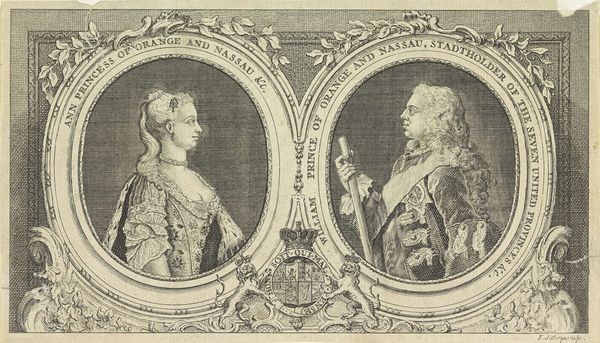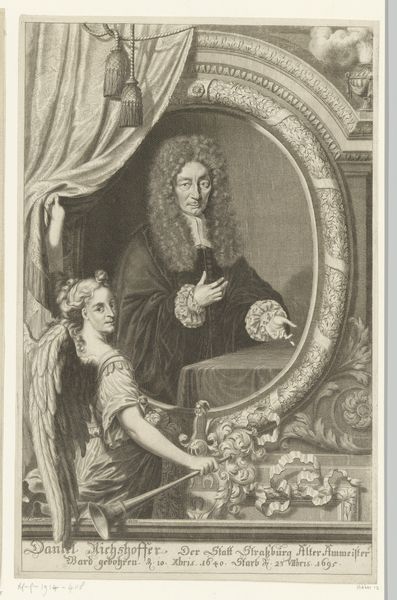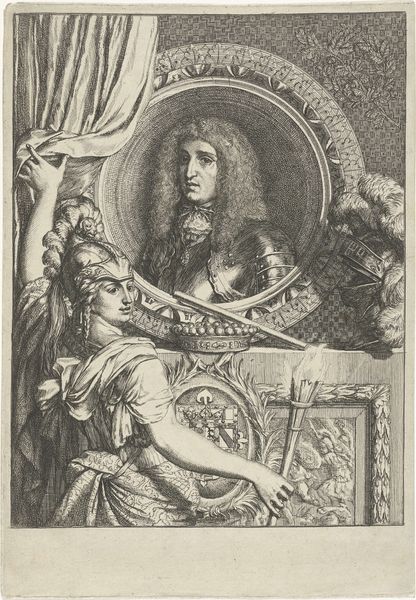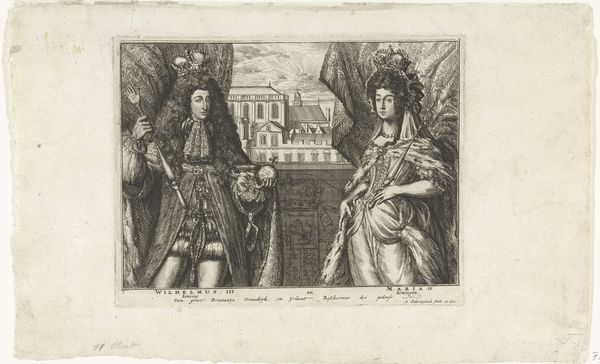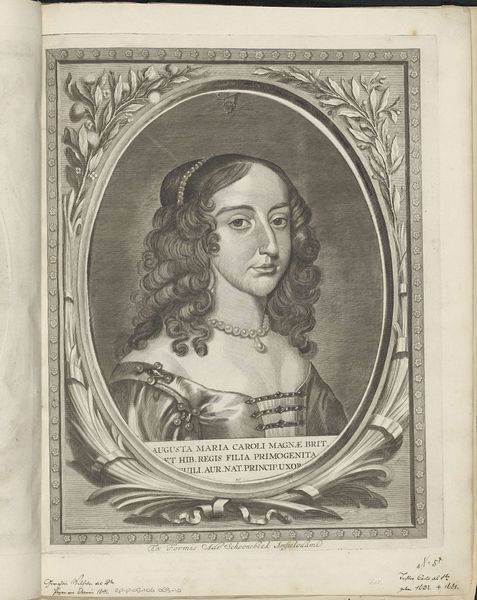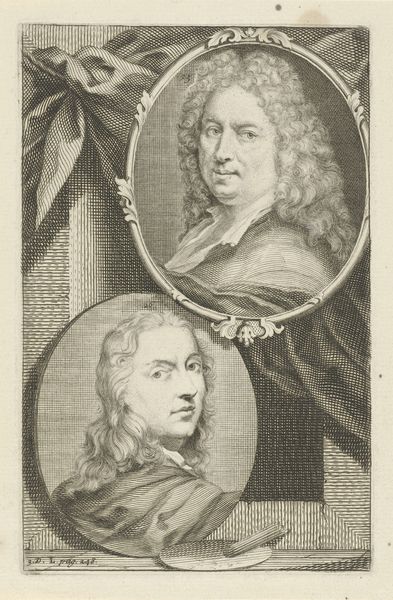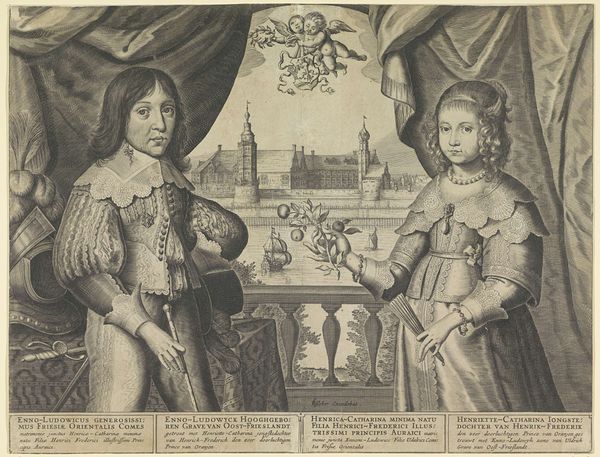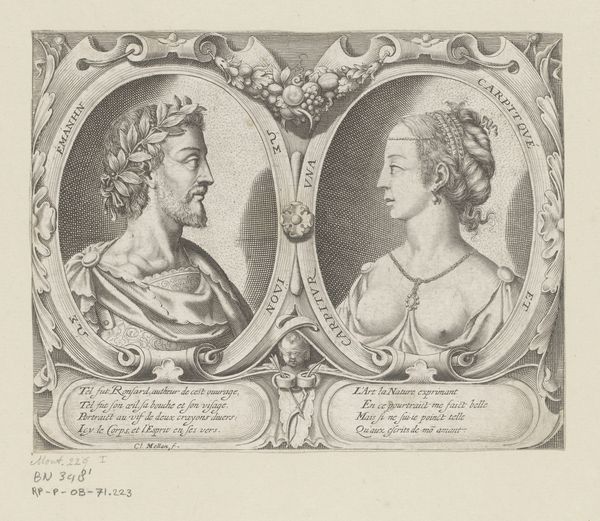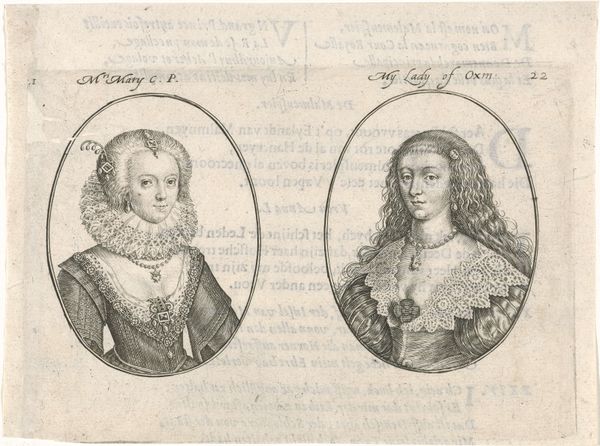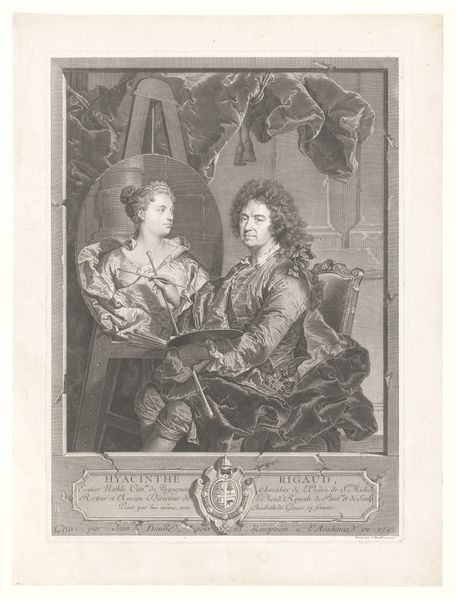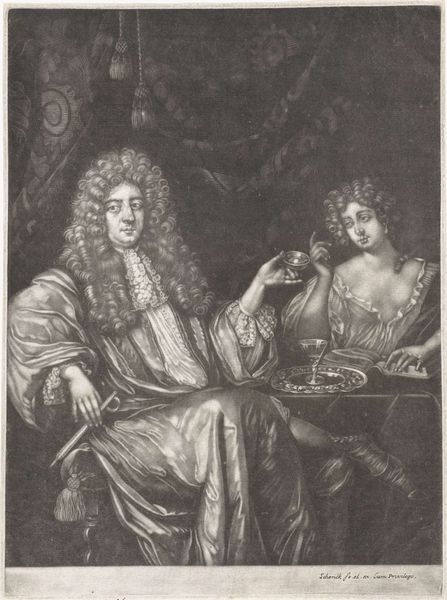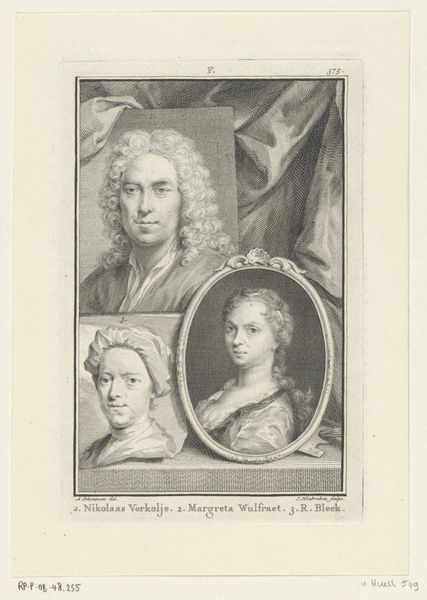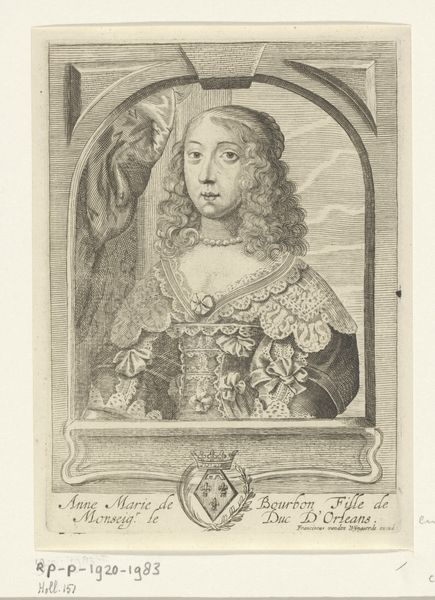
Portret van Willem III, prins van Oranje, en Maria II Stuart 1688 - 1749
0:00
0:00
print, engraving
#
portrait
#
baroque
#
dutch-golden-age
# print
#
old engraving style
#
group-portraits
#
engraving
Dimensions: height 121 mm, width 133 mm
Copyright: Rijks Museum: Open Domain
Curator: Here we have a Dutch Golden Age engraving entitled "Portret van Willem III, prins van Oranje, en Maria II Stuart," dating from approximately 1688 to 1749. It resides here in the Rijksmuseum. Editor: It’s strikingly formal, isn’t it? The stiff posture, the elaborate framing, all contribute to an atmosphere of cool, calculated power. It reminds me of carefully constructed propaganda. Curator: Precisely! Observe the careful rendering of their garments, the draping curtains, and especially the crowns positioned above them. The print clearly serves to legitimize and elevate the status of William and Mary. Note also how the oval frame around their portraits mirrors the shape of royal medallions. Editor: Yes, and consider what those carefully inscribed Dutch phrases surrounding the portraits tell us. "The Prince of Orange departed October 26, 1688, to England"... "The Princess departed from The Hague February 20, 1689". This is visual documentation of the power transition, their ascent to the English throne! Curator: From a structuralist perspective, the division of the frame emphasizes the duality of power – William on the left, Mary on the right. The mirroring effect, in conjunction with each face looking in slightly different directions, provides a symbolic contrast. Editor: I find myself more drawn to what’s not explicitly shown. How much violence and upheaval are concealed beneath these composed expressions? How do those events affect our understanding of the piece, not just as an artifact but as a social and political object? The portraits represent the ruling class, certainly, but who funded the creation of this object and to what purpose was it circulated? Curator: Valid points! It underscores how crucial it is to examine art from multiple angles. Without a doubt, the sharp lines and monochrome palette contribute to the print's overall commanding effect. The graphic elements certainly suggest resolute leadership. Editor: Exactly. This wasn't simply art for art's sake. It actively shaped the political landscape, crafting narratives of authority and divine right. The print's success resides not only in technique but also in effectively performing ideological work. Curator: A very astute analysis! It’s been enriching to consider how different lenses reveal multiple facets of this fascinating piece. Editor: Absolutely. Looking closer always seems to provide new entry points.
Comments
No comments
Be the first to comment and join the conversation on the ultimate creative platform.

